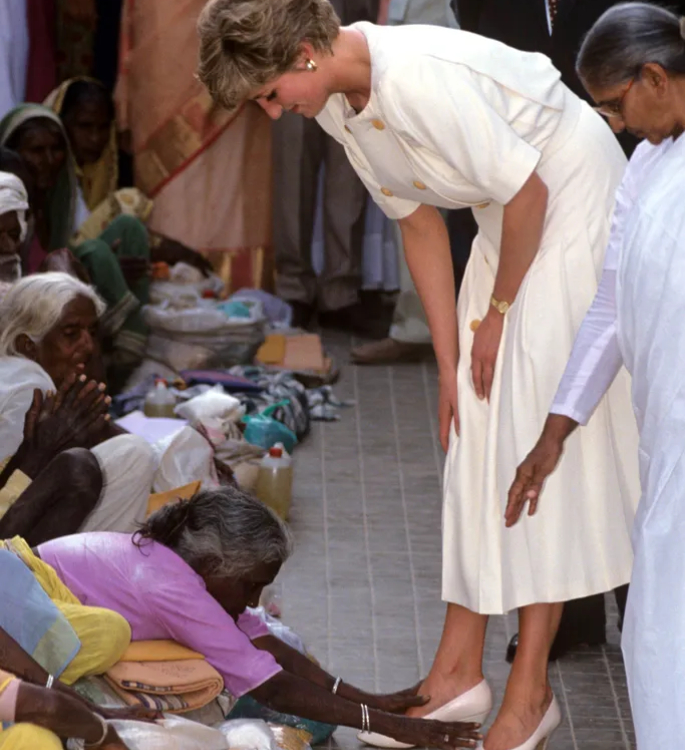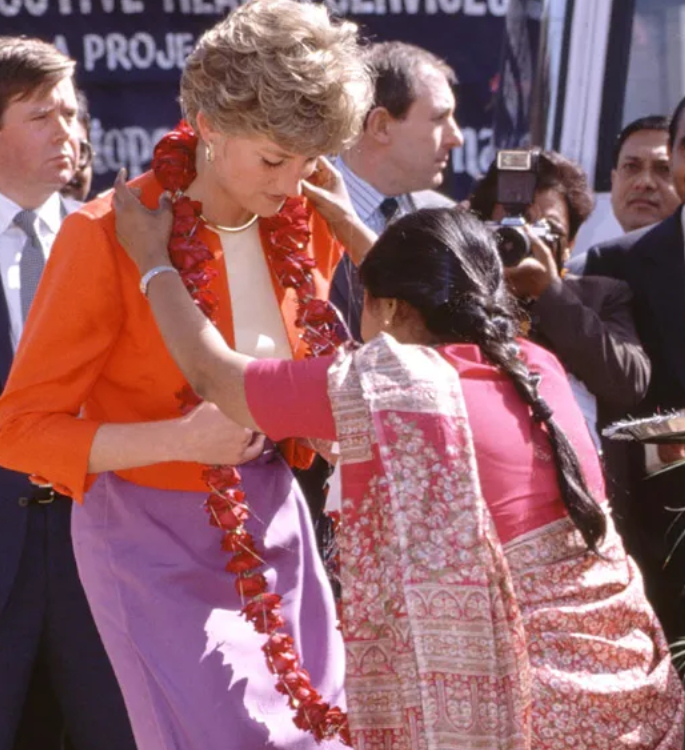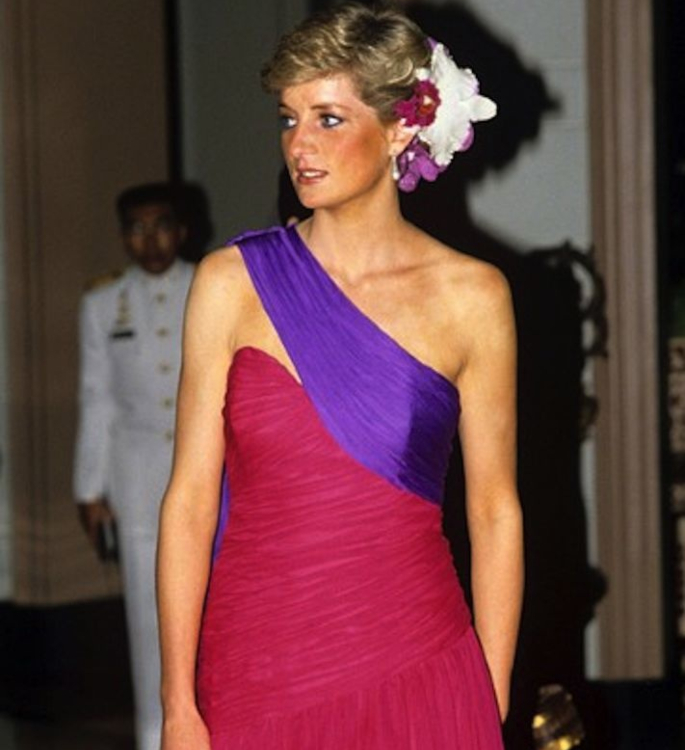Princess Diana’s Relationship with India
Since her death in 1997, Princess Diana remains a beloved figure by all.
Out of all of the Royals, except for the late Elizabeth II, Diana’s reputation remains strongly positive.
Beyond her her charitable endeavours and enduring elegance, lies a lesser-explored facet of her life – her profound connection with India.
As a country steeped in rich history, diverse cultures, and timeless traditions, India became more than just a destination on her royal itinerary.
It evolved into a realm of resonance, transformation, and self-discovery for the People’s Princess.
Beyond the lens of the paparazzi and confines of palace walls, we uncover a narrative that reveals as much about Diana herself as it does about the profound allure of the Indian subcontinent.
Among the Population


Opinion polls in the UK show that even in 2021, Princess Diana retains a considerably positive reputation.
72% of Britons hold a positive view of her, however, her reputation was positive globally.
South Asians generally have a very good view of Princess Diana. When looking at online forums and speaking to Indians, it appears that she is continually viewed in a fond light in India.
One commenter on Quora wrote how “Diana is loved and is sympathised within India”.
This is even though most Indians according to them “have no love lost for the UK royalty”.
This separation of Diana from the Royal family reputation-wise is a common way Indian mums view her.
A phenomenon that has taken on, especially since the later years of Diana’s life, is South Asian women looking up to Diana.
Indian women in particular look at their situation with their divorce, given the taboo nature of divorce in India. The stigma of divorce is especially strong against Indian women.
When season 5 of Netflix’s The Crown was airing in 2022, it showed that Indian women still shared a strong love for Diana.
This season was retelling the story of the late Diana, and her tumultuous relationship with the Royal family.
Anecdotally, many Indian women started watching The Crown for Diana’s story.
Kaustabh from India shares how her death affected her reputation amongst his family.
This was due to the way she was “caught in the crash” with her “boyfriend/lover”. In spite of this, “she was definitely the favourite royal” in his family.
Their perception of her wider situation had been that “Charles, Camilla, and the royal family were very unfair to her”.
Part of her appeal directly stems from the fact she came from a ‘normal’ background. Even though she was born of nobility, it was her actions that showed otherwise.
She was the only Princess who had had a paid job prior to being a part of the Royal family.
The way she carried out her role as Princess stood out largely because she did not conform to the royal standards.
Diana was dubbed “The People’s Princess” due to her campaigning work.
It was due to her treating people of all backgrounds equally in her interactions.
One of the most noted acts of this was when she physically touched HIV/AIDs patients in October 1991.
This was at the height of hysteria against gay men, with misconceptions about the disease.
Indians today also hold nuanced views of her. Whilst her efforts are seen positively, numerous online discussions and forums do note criticisms.
These criticisms of her as a privileged westerner, having a white savour complex, fit into the notion of white public figures going around the world to ‘save’ poor non-white people.
One forum commenter remarks on how though he sees her work as genuine, they cannot name any of the non-white people in her photos.
However, it would do her work a disservice to simply call her a white saviour, especially as she often defied Royal rules and codes to bring attention to important issues.
There were also no known incidents of her treating ordinary Indians differently.
Her Diplomatic Visits to India


Royals or other officials engage in diplomatic visits.
However, they often appear to be dry or straightforward events that bring memorable photos, but there is scarcely anything to be said about them afterwards.
Yet Lady Diana’s visits were perceived as anything but. Diana’s personality and wit seeped into all of her public appearances.
Though she visited India multiple times, her first visit in 1992 is perhaps the most well-known.
This was a six-day visit, which consisted of a range of meetings and visits for both Charles and Diana.
During this visit, she went to the Mianpur Old Age Welfare Centre in Hyderabad. This was a noted visit because she openly shook hands with members of the Dalit caste.
At a time of great stigma, she defied the conventions and treated people of this caste equally.
Kaustabh from India states that “she was quite popular during her visit”, perhaps noted most by her Taj Mahal photo.
This photo depicts her alone in the foreground, sitting on what is now known as the “Diana Bench”.
Though it was not publicly known at the time, the photo became symbolic following the separation of Diana and Charles.
Her visit to Mother Theresa’s Missionaries of Charity Headquarters in Kolkata was also positively seen.
This visit involved interactions with the nuns of the hospice and destitute people getting help there.
In all of these interactions, Diana appeared courteous and respectful.
Cultural Appreciation


Diana’s cultural appreciation of India was twofold.
Firstly, in her willingness to adorn herself in Indian clothing. This perhaps can be most well seen with her various appearances in a salwar kameez.
The traditional attire of South Asian women worldwide, the salwar kameez is strongly representative of South Asian culture.
Diana also wore an iconic heavily embroidered gown inspired by Mughal aesthetics. This was designed by Catherine Walker specifically for the February 1992 visit to India.
Catherine Walker also designed the sari that Diana wore when she and King Charles III visited the King of Thailand in India, on February 4, 1988.
Diana’s commitment and ability to comfortably enjoy Indian clothing are incredibly notable.
Whilst many western public figures have worn Indian clothing, among the royals it stands out.
It has also been revealed that the late Lady Diana was a patron of Indian designer Ritu Kumar’s store.
In fact, she wore a blue salwar kameez purchased there on a 1997 visit to Lahore.
Diana had much deeper interactions with Indian culture.
This can be said to be true as her empathy and kindness graced Indian hearts during her various visits to India, especially as she made sure to speak with locals.
She also engaged in local customs and traditions such as when she wore a bindi on her forehead in Hyderabad in 1992.
Furthermore, and perhaps surprisingly, Diana has some Indian heritage.
This came to light in 2013, with it found that her great-great-grandmother Catherine Dyer has Indian heritage.
Dyer’s mother, Eliza Kewark, was of Indian descent. However, due to the racism of the time, this was erased.
She had been labelled as “ purely Armenian” and this lie persisted in their family.
But since it was revealed in 2013, her family has been nothing but celebratory of this.
For many Indians, this knowledge has increased the warm opinions they hold toward Diana in her legacy.
Princess Diana’s relationship with India as a country, whilst officially narrated by diplomacy, is one that is deep and lasting.
With the strong positive opinions held towards her by Indians and the love of Indian culture, it is clear that it is not superficial.
Whilst not every Indian may necessarily like her, from discussions and online forums it is clear she’s viewed favourably.
Diana’s legacy is regarded strongly through her humanitarian efforts. Not to mention the culturally relatable nature of her split with King Charles III.